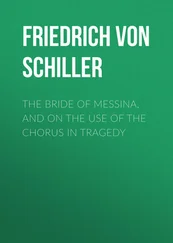Thomas Allies - The Holy See and the Wandering of the Nations, from St. Leo I to St. Gregory I
Здесь есть возможность читать онлайн «Thomas Allies - The Holy See and the Wandering of the Nations, from St. Leo I to St. Gregory I» — ознакомительный отрывок электронной книги совершенно бесплатно, а после прочтения отрывка купить полную версию. В некоторых случаях можно слушать аудио, скачать через торрент в формате fb2 и присутствует краткое содержание. ISBN: , Жанр: foreign_antique, foreign_prose, Историческая проза, на английском языке. Описание произведения, (предисловие) а так же отзывы посетителей доступны на портале библиотеки ЛибКат.
- Название:The Holy See and the Wandering of the Nations, from St. Leo I to St. Gregory I
- Автор:
- Жанр:
- Год:неизвестен
- ISBN:http://www.gutenberg.org/ebooks/29268
- Рейтинг книги:3 / 5. Голосов: 1
-
Избранное:Добавить в избранное
- Отзывы:
-
Ваша оценка:
- 60
- 1
- 2
- 3
- 4
- 5
The Holy See and the Wandering of the Nations, from St. Leo I to St. Gregory I: краткое содержание, описание и аннотация
Предлагаем к чтению аннотацию, описание, краткое содержание или предисловие (зависит от того, что написал сам автор книги «The Holy See and the Wandering of the Nations, from St. Leo I to St. Gregory I»). Если вы не нашли необходимую информацию о книге — напишите в комментариях, мы постараемся отыскать её.
The Holy See and the Wandering of the Nations, from St. Leo I to St. Gregory I — читать онлайн ознакомительный отрывок
Ниже представлен текст книги, разбитый по страницам. Система сохранения места последней прочитанной страницы, позволяет с удобством читать онлайн бесплатно книгу «The Holy See and the Wandering of the Nations, from St. Leo I to St. Gregory I», без необходимости каждый раз заново искать на чём Вы остановились. Поставьте закладку, и сможете в любой момент перейти на страницу, на которой закончили чтение.
Интервал:
Закладка:
The wandering of the nations, says a great historian, was of decisive effect for the Church, and he quotes another historian's summary description of it: "It was not the migration of individual nomad hordes, or masses of adventurous warriors in continuous motion, which produced changes so mighty. But great, long-settled peoples, with wives and children, with goods and chattels, deserted their old seats, and sought for themselves in the far distance a new home. By this the position of individuals, of communities, of whole peoples, was of necessity completely altered. The old conditions of possession were dissolved. The existing bonds of society loosened. The old frontiers of states and lands passed away. As a whole city is turned into a ruinous heap by an earthquake, so the whole political system of previous times was overthrown by this massive transmigration. A new order of things had to be formed corresponding to the wholly altered circumstances of the nation." 17 17 Giesebrecht, quoted by Hergenröther, K.G. , i. 449.
I draw from the same historian 18 18 Hergenröther, i. 449-453.
an outline of the movement, running through several centuries, which had this final result. Great troops of Celts had, before the time of Christ, sought to settle themselves in Rhœtia and Upper Italy, even as far as Rome. Cimbrians and Teutons, with as little success, had betaken themselves southwards, while under the empire the pressure of peoples had more and more increased, and Trajan could hardly maintain the northern frontier on the Danube. In the third century, Alemans and Sueves advanced to the Upper Rhine, and the Goths, from dwelling between the Don and Theiss, came to the Danube and the Black Sea. Decius fell in battle with them. Aurelian gave them up the province of Dacia. Constantine the Great conquered them, and had Gothic troops in his army. Often they broke into the Roman territory, and carried off prisoners with them. Some of these were Christians and introduced the Goths to the knowledge of Christianity. Theophilus, a Gothic bishop, was at the Nicene Council in 325. They had clergy, monks, and nuns, with numerous believers. Under Athanarich, king of the Visigoths, Christians already suffered, with credit, a bloody persecution. On the occasion of the Huns, a Scythian people, compelling the Alans on the Don to join them, then conquering the Ostrogoths and oppressing the Visigoths, the latter prevailed on the emperor Valens to admit them into the empire. Valens gave them dwellings in Thrace on the condition that they should serve in his army and accept Arian Christianity. So the larger number of Visigoths under Fridiger in 375 became Arians. They soon, however, broke into conflict with the empire through their ill-treatment by the imperial commanders. In 378, Valens was defeated near Adrianople; his army was utterly crushed; he met himself with a miserable death. After this the Visigoths in general continued to be Arians, though many, especially through the exertions of St. Chrysostom, were converted to Catholicism. Most of them, however, seem to have been only half Arians, like their famous bishop Ulphilas. He was by birth a Goth – some say a Cappadocian – was consecrated between 341 and 348, in Constantinople. He gave the Goths an alphabet of their own, formed after the Greek, and made for them a translation of the Bible, of great value as a record of ancient German. He died in Constantinople before 388 – probably in 381.
Under Theodosius I., about 382, the Visigoths accepted the Roman supremacy, and the engagement to supply 40,000 men for the service of the empire, upon the terms of occupying, as allies free of tribute, the provinces assigned to them of Dacia, Lower Mœsia, and Thrace. After this, discontented at the holding back their pay, and irritated by Rufinus, who was then at the head of the government of the emperor Arcadius, they laid waste the Illyrian provinces down to the Peloponnesus, and made repeated irruptions into Italy, in 400 and 402, under their valiant leader Alarich. In 408 he besieged Rome, and exacted considerable sums from it. He renewed the siege in 409, and made the wretched prefect Attalus emperor, whom he afterwards deposed, and recognised Honorius again. At last he took Rome by storm on the 24th August, 410. The city was completely plundered, but the lives of the people spared. He withdrew to Lower Italy and soon died. His brother-in-law and successor, Ataulf, was first minded entirely to destroy the Roman empire, but afterwards to restore it by Gothic aid. In the end he went to Gaul, conquered Narbonne, Toulouse, and Bordeaux, and afterwards Barcelona. His half-brother Wallia, after reducing the Alans and driving back the Sueves and Vandals, planted his seat in Toulouse, which became, in 415, the capital of his Aquitanean kingdom, Gothia or Septimania. Gaul, in which several Roman commanders assumed the imperial title, was overrun in the years from 406 to 416 by various peoples, whom the two opposing sides called in: by Burgundians, Franks, Alemans, Vandals, Quades, Alans, Gepids, Herules. The Alans, Sueves, Vandals, and Visigoths, at the same time, went to Spain. Their leaders endeavoured to set up kingdoms of their own all over Gaul and Spain.
Arianism came from the Visigoths not only to the Ostrogoths but also to the Gepids, Sueves, Alans, Burgundians, and Vandals. But these peoples, with the exception of the Vandals and of some Visigoth kings, treated the Catholic religion, which was that of their Roman subjects, with consideration and esteem. Only here and there Catholics were compelled to embrace Arianism. Their chief enemy in Gaul was the Visigoth king Eurich. Wallia, dying in 419, had been succeeded by Theodorich I. and Theodorich II., both of whom had extended the kingdom, which Eurich still more increased. He died in 483. Under him many Catholic churches were laid waste, and the Catholics suffered a bloody persecution. He was rather the head of a sect than the ruler of subjects. This, however, led to the dissolution of his kingdom, which, from 507, was more and more merged in that of the Franks.
The Burgundians, who had pressed onwards from the Oder and the Vistula to the Rhine, were in 417 already Christian. They afterwards founded a kingdom, with Lyons for capital, between the Rhone and the Saone. Their king Gundobald was Arian. But Arianism was not universal; and Patiens, bishop of Lyons, who died in 491, maintained the Catholic doctrine. A conference between Catholics and Arians in 499 converted few. But Avitus, bishop of Vienne, gained influence with Gundobald, so that he inclined to the Catholic Church, which his son Sigismund, in 517, openly professed. The Burgundian kingdom was united with the Frankish from 534.
The Sueves had founded a kingdom in Spain under their king Rechila, still a heathen. He died in 448. His successor, Rechiar, was Catholic. When king Rimismund married the daughter of the Visigoth king Theodorich, an Arian, he tried to introduce Arianism, and persecuted the Catholics, who had many martyrs – Pancratian of Braga, Patanius, and others. It was only between 550 and 560 that the Gallician kingdom of the Sueves, under king Charrarich, became Catholic, when his son Ariamir or Theodemir was healed by the intercession of St. Martin of Tours, and converted by Martin, bishop of Duma. In 563 a synod was held by the metropolitan of Braga, which established the Catholic faith. But in 585, Leovigild, the Arian king of the larger Visigoth kingdom, incorporated with his territory the smaller kingdom of the Sueves. Catholicism was still more threatened when Leovigild executed his own son Hermenegild, who had married the Frankish princess Jugundis, for becoming a Catholic. But the martyr's brother, Rechared, was converted by St. Leander, archbishop of Seville, and in 589 publicly professed himself a Catholic. This faith now prevailed through all Spain.
Читать дальшеИнтервал:
Закладка:
Похожие книги на «The Holy See and the Wandering of the Nations, from St. Leo I to St. Gregory I»
Представляем Вашему вниманию похожие книги на «The Holy See and the Wandering of the Nations, from St. Leo I to St. Gregory I» списком для выбора. Мы отобрали схожую по названию и смыслу литературу в надежде предоставить читателям больше вариантов отыскать новые, интересные, ещё непрочитанные произведения.
Обсуждение, отзывы о книге «The Holy See and the Wandering of the Nations, from St. Leo I to St. Gregory I» и просто собственные мнения читателей. Оставьте ваши комментарии, напишите, что Вы думаете о произведении, его смысле или главных героях. Укажите что конкретно понравилось, а что нет, и почему Вы так считаете.











